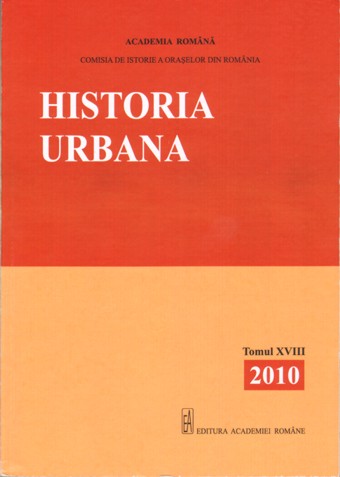Schimbări în zonarea funcţională urbană ca urmare a dezvoltării serviciilor comerciale
Changes in the Urban Functional Zones Triggered by the Development of Commercial Services
Author(s): Radu SăgeatăSubject(s): Economy
Published by: Editura Academiei Române
Keywords: commercial investments; malls; hypermarkets; transnational companies; globalization; Romania.
Summary/Abstract: The potential of the outlet market is a decisive factor in earmarking investments to big commercial units, e.g. malls (which gather together a wide range of shops and services units, restaurants, recreation and entertainment areas, cinema-halls, banks, swimming-pools, play-grounds for children, etc.), or supermarkets, chains of stores usually set up by transnational companies. The logic behind the establishment and diffusion in the territory of these commercial units closely correlates with the location of banks, according to the spatial, income-based segregation of the population. Thus, large commercial units (malls and hypermarkets) are frequently opened up in large cities with macro-regional polarising functions and a positive economic dynamic that ensures an outlet market competitive enough, in terms of both financial and quantitative considerations, so as to guarantee profitability. On the other hand, investments in towns that are at the base of the urban hierarchy materialise in supermarkets, but if towns have below 30,000 inhabitants they are considered to be unprofitable. The same pyramidal distribution observed in the case of financial investments holds also for commercial units, provided that the extent of the investment is directly proportional to the size of the respective town. The east/west financial segregation mirrors the development of commercial services, this type of investment being drawn mainly by Bucharest and the large cities from Transylvania and Banat. Thus, the largest malls are situated mainly in Bucharest and in four western metropolises: Timişoara, Cluj-Napoca, Arad and Oradea. Most malls built in Bucharest (Bucharest Mall, Plaza Romania, City Mall and Liberty Center) have been raised on the site of the unfinished buildings of former food complexes (mockingly, people used to call them “hunger circuses”), whose construction had begun in the 1980s in convergence areas of population flows, subsequently contributing to the development of their neighbourhoods. The next investments had in view either empty spaces on the outskirts of the city (Carrefour and Metro Militari, Cora Pantelimon), using the rail-and-road infrastructure in place at the margin of Bucharest, or the sites of former industrial units later demolished (e.g. Cora Lujerului, built on the site of a dairy factory, could use Cotroceni railway station), similarly AFI Cotroceni Mall, situated on the premises of the former UMEB plant, had the advantage of a railway infrastructure. Advantageous locations lead in time to the development of commercial parks: Bǎneasa outside Bucharest on DN1 highway to Ploieşti; Militari on A1 to Piteşti and Dragonul-Roşu on the highway to Voluntari-Urziceni. A similar commercial park is scheduled to develop in the Lujerului-Cotroceni area and encompass also Cora Lujerului hypermarket, Plaza Romania and AFI Cotroceni malls.
Journal: Historia Urbana
- Issue Year: XVIII/2010
- Issue No: 18
- Page Range: 263-280
- Page Count: 18
- Language: Romanian
- Content File-PDF

